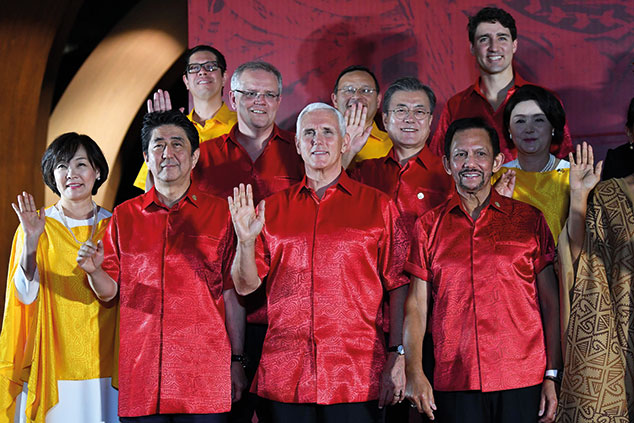
What next? Trade tensions continue to simmer between the world’s two superpowers. In July, the US introduced 25% levies on over 800 Chinese imports, including industrial robots and electric cars, says Owen Walker in the Financial Times, and the list keeps growing. Beijing has retaliated with similar tariffs on imports from the US including soya beans, beef and whiskey.
US Vice President Mike Pence says the US won’t “change course until China changes its ways”. So there is little prospect of a cessation of hostilities. But so far, at least, the escalating trade war has had scant impact on trade data, says Chen Long on Gavekal Research.
The first round of US tariffs was imposed in July, “but China’s export growth actually picked up to 6% in July and 8% in August, from 3%-4% in the second quarter”. Note that the various tariffs that have been imposed so far “have covered only 2% of world trade”, says Neil Shearing on Capital Economics. But we are unlikely to get off scot-free.
Tariffs distort global trade flows, decrease efficiency and push production to more expensive locations. Investors have been concerned about the knock-on effect on Singapore, South Korea and Taiwan, which are some of the world’s most trade-dependent economies. They are also crucial to regional supply chains between China and the US. In Taiwan, exports of components such as computer chips to mainland China comprise almost 2% of GDP .
Some countries are profiting
Yet some nations might benefit from the trade war. This includes Vietnam and Malaysia, according to a recent Economist Intelligence Unit report, in particular their low-end manufacturing of technology products such as intermediate components, along with consumer goods such as mobile phones.
That’s because some major electronics companies already have existing plants in these countries. Samsung and Intel have a presence in Vietnam. “This means that they would be able to re-deploy investment and production relatively smoothly.” Another plus point for both states is solid infrastructure. The impact of the trade war has become another issue investors in Asia need to factor in.
Progress in the Philippines
Economists have long urged the Philippines to “walk on two legs” so that its economic growth does not depend solely on services, says The Economist. “Instead it has kept hopping – but with impressive speed.” The economy is growing by 6.1% year on year.
The populist president, Rodrigo Duterte, has spooked investors but his violent crackdown on crime has also meant that “economic matters have been left largely to well-trained technocrats”. They have been trying to help the economy develop a second leg by improving infrastructure. The government has devoted PHP9trn ($170bn) into a project to bolster infrastructure expenditure to more than 7% of GDP (up from 5%) by 2022.
This spending spree has fuelled a budget deficit and a current-account shortfall. The latter has depressed the peso, which in turn has contributed to inflation of 6.7%. “So rather than celebrating record per capita GDP, Duterte’s administration should keep an eye on the price of bread and rice,” says Panos Mourdoukoutas in Forbes.
Still, the central bank is lifting interest rates to squeeze out inflation, and the state has loosened restrictions on foreign investment to secure much-needed capital. In the long run, the infrastructure spending should pay off. No wonder a study by the McKinsey Global Institute thinks the Philippines could be one of few emerging markets to achieve sustained growth over the next decade.